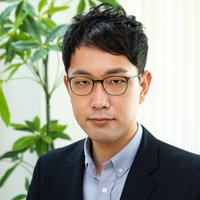Ranging from thin-film bioelectronics, to high-performance semiconductor systems, to actively multiplexed device array for neural recording/monitoring, to their use as implantable bioelectronics, Enming Song has worked on a variety of topics in electronic materials and engineering, with 15 published papers as first/co-first author in Nature Materials, Cell, Nature Biomedical Engineering, and in 3 papers of Proceedings of the National Academy of Sciences of the United States of America (PNAS).
His first research involved concepts in high-performance inorganic electronics that exploit ultra-thin, single crystalline silicon nanomembranes. Enming Song reduced the thickness of silicon nanomembranes down to ~10 nm based on silicon-on-insulator (SOI) wafer structures in a controllable way by repeating oxidation and wet chemical etching of silicon. These semiconductors, by virtue of their ultra-thin geometries, show unique electrical properties that are highly influenced by external stimuli such as temperature and illuminations.
Based on the properties of silicon nanomembranes investigated above, Enming Song ultimately integrated fully functional flexible systems with active devices at high levels of sophistication. Applications depending on this work include high-performance photodetectors, circuit safeguards, information security, and sensing/control systems.
During the Ph.D. periods, Enming Song discovered that the physical transfer of thermally grown layers of SiO2 on the surfaces of device-grade silicon wafers could act as a novel barrier for flexible bioelectronics, meanwhile enabling capacitively coupled measurement of bio-potentials. These findings will pave the way for bio-integrated flexible devices for animal model studies and human healthcare. Papers on those topics were published in ACS Nano and in Advanced Functional Materials and in Advanced Electronic Materials, each with Enming Song as the first author.
As a postdoctoral fellow in Prof. John A. Rogers' group (Northwestern University) in 2018, Enming Song successfully developed smart methods for a scaled electronic system that incorporates >32,000 silicon CMOS and inorganic microscale light-emitting diodes derived from wafer sources distributed at variable pitch spacing and fill factors across large areas on polymer films, at full organ-scale dimensions. Co-integration with thermal SiO2 biofluid barriers yields long-term stability, over timeframes that project to many decades of immersion in simulated biofluid environments. These ideas have potential as the basis of long-lived, highly functional semiconductor device interfaces to living organisms, of particular relevance to neural and cardiac systems.
Up to now, embodiments of his work include (i) fabrication for tens of thousands of silicon-nanomembrane (Si-NM) transistor arrays by use of transfer-printing technology for full-brain-size brain signal sensing at variable densities; (ii) development of ultrathin encapsulation strategies at submicron thickness with long-term stability over a multi-decade lifetime in vivo; (iii) establishment of biocompatible imaging for recording/stimulation neuromodulation.




